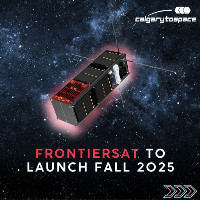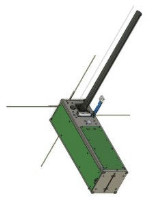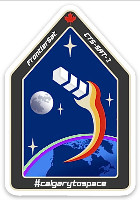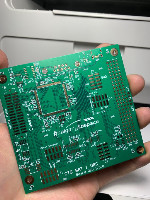| Satellite name |
FrontierSat (CalgaryToSpace-1, CTS-SAT-1, CTS Sat1) |
| Spacecraft type |
CubeSat |
| Units or mass |
3U |
| Status |
not launched, expected in 2025 |
| Launcher |
not launched |
| Organization |
University of Calgary (CalgaryToSpace) |
| Institution |
University |
| Entity |
Academic / Education |
| Headquarters |
Canada |
| Launch brokerer |
RIDE! Space |
| Oneliner |
Carrying local payloads designed and made in UCalgary labs. We will also be launching a camera to space, allowing for photo opportunities of the satellite and Earth!
|
| Description |
The satellite will serve as a platform for two scientific instruments:
- The Mini Plasma Imager (MPI),
- A Deployable Composite Lattice Boom (DCLB). In a near-polar orbit, the satellite will be used to collect data on ionic winds over the long term, up to 2 years. The DCLB will be deployed for its very first demonstration in space and will have its structural and flexural properties studied through camera images.
The amateur radio transceiver on the CubeSat will be used to transmit payload data and system telemetry to the ground station. These transmissions will not be encrypted and will be able to be accessed by all amateur operators.
Launching the first student designed and assembled CubeSat in Calgary.
- Every aspect of the satellite - except for one instrument - is being worked on by active UCalgary students (undergrad, master’s, and PhD).
- The instrument not fully created by students is the Mini Plasma Imager which is an instrument designed by a UCalgary scientist with funding from the Canadian Space Agency: Aimed at studying ion drift and auroras.
- Numerous students on the satellite team have or are directly involved with the development of this instrument, as the researcher (Dr. Johnathan Burchill) heavily emphasizes student involvement and training.
- A deployable boom instrument is a project being designed by a local PhD student, Nick Elderfield, who serves as a graduate student advisor on the team.
- Students on the communications team with no prior amateur radio experience will be encouraged to become HAMs and learn more about the vast applications of amateur radio throughout the project.
This CubeSat mission will contribute to the advancement of the amateur radio service by:
- Introducing new team members to amateur radio.
- Encourage members to receive their amateur radio license.
- Demonstrate to visitors at the Rothney Observatory how the ground station and ground control system works to communicate and track the satellite.
- Amateurs around the world (within reach of the satellite) will be able to receive telemetry from the satellite.
- Open-source ground control software will allow operators to contribute to the project and customize what they want to receive.
|
| Notes |
FrontierSat is the primary name. Original launch provider was Momentus.
|
| Sources |
[1] [2] [3] [4] [5] [6] |
| Photo sources |
[1] [2] [3] [4] |
Last modified: 2025-04-12




